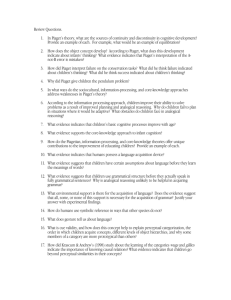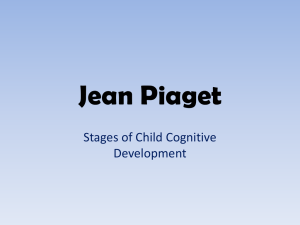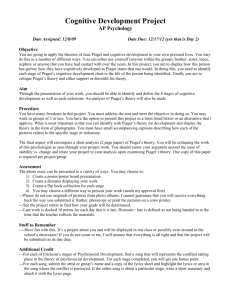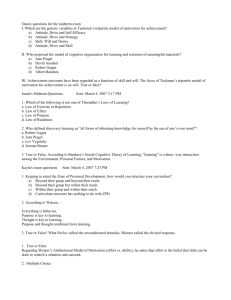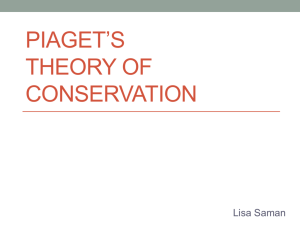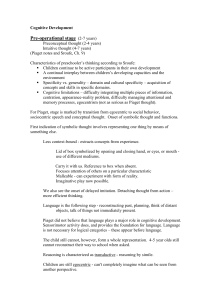IS IT TIME TO LET GO OF CONSERVATION OF NUMBER?
advertisement
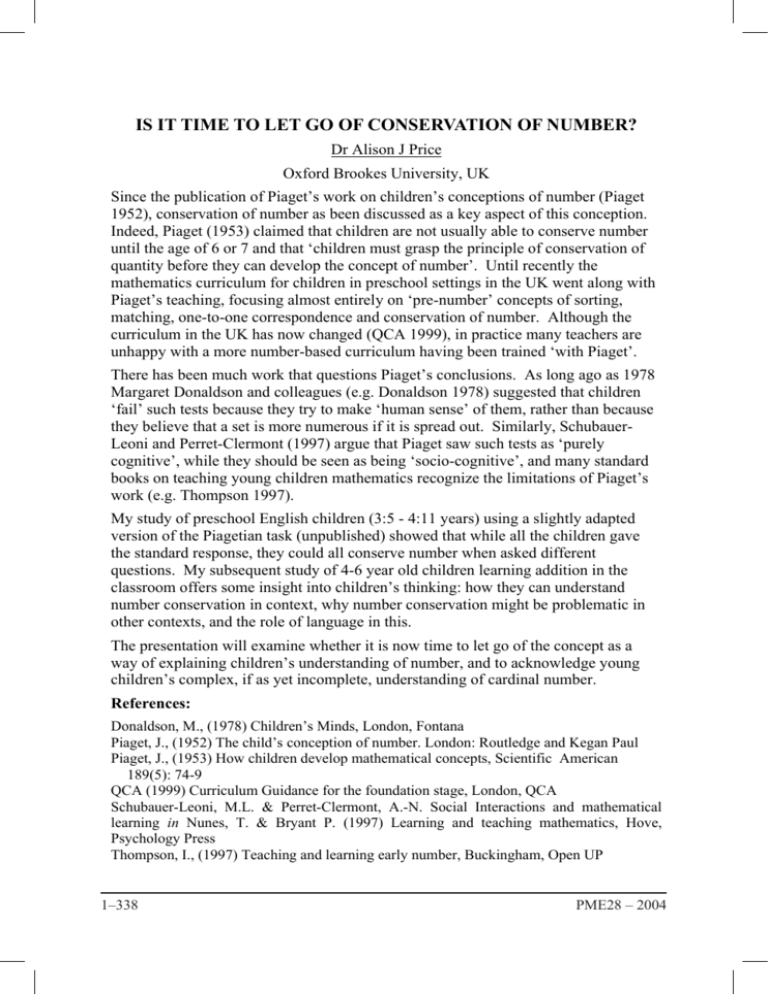
IS IT TIME TO LET GO OF CONSERVATION OF NUMBER? Dr Alison J Price Oxford Brookes University, UK Since the publication of Piaget’s work on children’s conceptions of number (Piaget 1952), conservation of number as been discussed as a key aspect of this conception. Indeed, Piaget (1953) claimed that children are not usually able to conserve number until the age of 6 or 7 and that ‘children must grasp the principle of conservation of quantity before they can develop the concept of number’. Until recently the mathematics curriculum for children in preschool settings in the UK went along with Piaget’s teaching, focusing almost entirely on ‘pre-number’ concepts of sorting, matching, one-to-one correspondence and conservation of number. Although the curriculum in the UK has now changed (QCA 1999), in practice many teachers are unhappy with a more number-based curriculum having been trained ‘with Piaget’. There has been much work that questions Piaget’s conclusions. As long ago as 1978 Margaret Donaldson and colleagues (e.g. Donaldson 1978) suggested that children ‘fail’ such tests because they try to make ‘human sense’ of them, rather than because they believe that a set is more numerous if it is spread out. Similarly, SchubauerLeoni and Perret-Clermont (1997) argue that Piaget saw such tests as ‘purely cognitive’, while they should be seen as being ‘socio-cognitive’, and many standard books on teaching young children mathematics recognize the limitations of Piaget’s work (e.g. Thompson 1997). My study of preschool English children (3:5 - 4:11 years) using a slightly adapted version of the Piagetian task (unpublished) showed that while all the children gave the standard response, they could all conserve number when asked different questions. My subsequent study of 4-6 year old children learning addition in the classroom offers some insight into children’s thinking: how they can understand number conservation in context, why number conservation might be problematic in other contexts, and the role of language in this. The presentation will examine whether it is now time to let go of the concept as a way of explaining children’s understanding of number, and to acknowledge young children’s complex, if as yet incomplete, understanding of cardinal number. References: Donaldson, M., (1978) Children’s Minds, London, Fontana Piaget, J., (1952) The child’s conception of number. London: Routledge and Kegan Paul Piaget, J., (1953) How children develop mathematical concepts, Scientific American 189(5): 74-9 QCA (1999) Curriculum Guidance for the foundation stage, London, QCA Schubauer-Leoni, M.L. & Perret-Clermont, A.-N. Social Interactions and mathematical learning in Nunes, T. & Bryant P. (1997) Learning and teaching mathematics, Hove, Psychology Press Thompson, I., (1997) Teaching and learning early number, Buckingham, Open UP 1–338 PME28 – 2004


